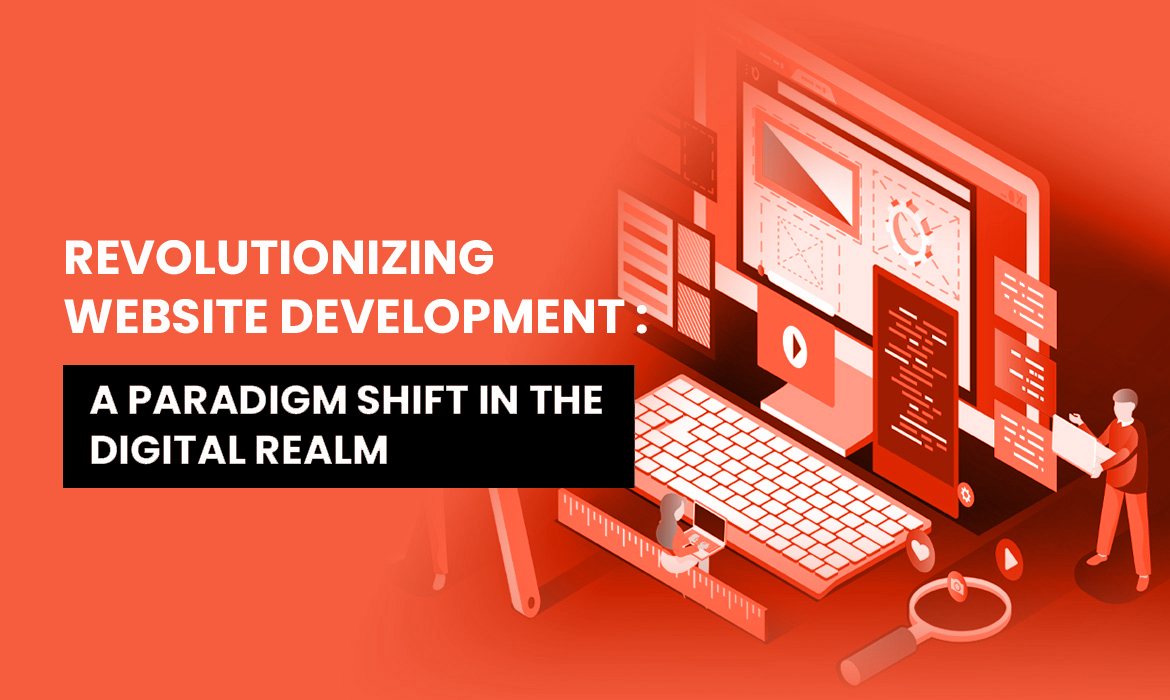
REVOLUTIONIZING WEBSITE DEVELOPMENT: A PARADIGM SHIFT IN THE DIGITAL REALM
In the dynamic landscape of the internet, where innovation is the norm and change is constant, website development is undergoing a revolutionary transformation. Gone are the days of static, one-size-fits-all web pages. Today, websites are becoming more personalized, interactive, and seamlessly integrated into our daily lives. This paradigm shift in website development is not merely about aesthetics or functionality; it's about redefining the essence of the online experience.
At the heart of this revolution lies the advent of modular and scalable design frameworks. Traditional website development often involved building pages from scratch, leading to lengthy development cycles and limited flexibility. However, with the rise of modular design systems like component-based architecture and design libraries, developers can now create websites by assembling building blocks, significantly reducing time-to-market and facilitating iterative improvements.
Furthermore, the emergence of low-code and no-code platforms has democratized website development, empowering individuals with limited technical expertise to create professional-grade websites effortlessly. These platforms offer intuitive drag-and-drop interfaces, pre-built templates, and seamless integrations with third-party services, enabling entrepreneurs, small businesses, and content creators to establish their online presence without the need for extensive coding knowledge.
Another pivotal aspect of this revolution is the prioritization of user-centric design principles. Websites are no longer static digital brochures but dynamic ecosystems that adapt to the unique needs and preferences of each visitor. Personalization algorithms, machine learning, and data analytics are employed to deliver tailor-made experiences, ensuring that users find relevant content effortlessly and engage with the website more meaningfully. Moreover, the rise of headless CMS (Content Management System) architecture has redefined the way content is managed and delivered across various digital channels. Unlike traditional monolithic CMS platforms, headless CMS decouples the content management backend from the presentation layer, allowing developers to deliver content seamlessly across websites, mobile apps, IoT devices, and other digital touchpoints. This decoupling of concerns enhances agility, scalability, and cross-platform compatibility, empowering businesses to stay ahead in the omnichannel landscape.
Additionally, the integration of emerging technologies such as Artificial Intelligence (AI), Augmented Reality (AR), and Voice User Interfaces (VUI) is reshaping the boundaries of website development. AI-powered chatbots and virtual assistants provide instant support and personalized recommendations, enhancing the user experience. AR technologies enable immersive product experiences and virtual try-ons, bridging the gap between online and offline shopping. VUIs enable hands-free interaction with websites, making them more accessible and user-friendly for individuals with disabilities.
In conclusion, the revolution in website development is not a singular event but an ongoing evolution fuelled by innovation, creativity, and technological advancement. By embracing modular design frameworks, low-code platforms, user-centric design principles, headless CMS architecture, and emerging technologies, developers can create websites that are not just functional tools but immersive digital experiences that captivate, engage, and inspire users across the globe. As we navigate the ever-changing digital landscape, one thing is certain: the future of website development is boundless, and the possibilities are endless.




Leave A Comment